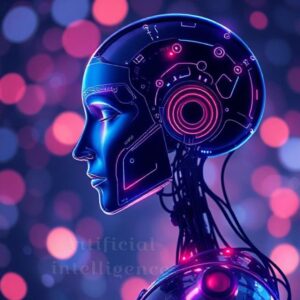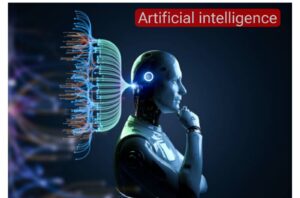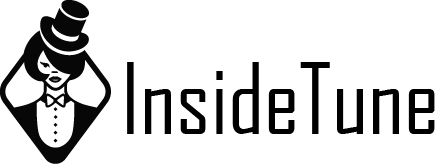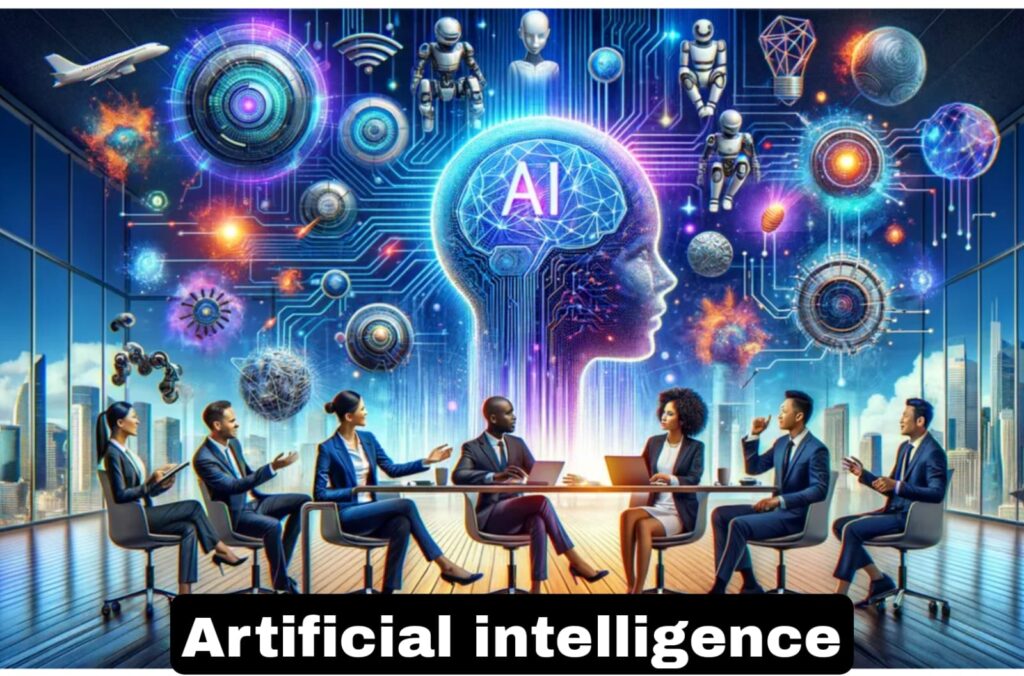Contents
- 1 Introduction Artificial Intelligence
- 1.1 Quick Bio Table
- 1.2 🕰️ A Temporary Historical past of AI
- 1.3 🤖 Forms of Synthetic Intelligence
- 1.4 🧩 Key Applied sciences Behind AI
- 1.5 🌍 Actual-Life Functions of AI
- 1.6 🧠 AI in Training
- 1.7 🏭 AI in Trade and Manufacturing
- 1.8 🌐 AI and the Web of Issues (IoT)
- 1.9 ⚖️ Moral Considerations and Challenges
- 1.10 📚 World Insurance policies and AI Regulation
- 1.11 🔮 The Way forward for AI: Hopes and Considerations
- 1.12 🛠️ Learn how to Put together for an AI-Pushed Future
- 1.13 🧑🏫 Human-AI Collaboration
- 1.14 📈 Development and Statistics in AI
- 1.15 📢 Well-known Quotes on Synthetic Intelligence
- 1.16 📝 Conclusion
- 1.17 (FAQs) About AI
Introduction Artificial Intelligence
Artificial Intelligence (AI) is not simply science fiction. It is an actual and quickly evolving discipline of pc science that goals to simulate human intelligence in machines. Out of your smartphone’s voice assistant to advanced self-driving automobiles, AI is all over the place. It is altering how we work, talk, store, and even assume.
At its core, AI entails the event of algorithms that allow machines to carry out duties that usually require human intelligence. These tasks include learning, reasoning, solving problems, understanding language, and perceiving the world.
Quick Bio Table
| Feature | Details |
|---|---|
| Topic | Artificial Intelligence (AI) |
| Focus Areas | History, Types, Applications, Ethics |
| Word Count | Up to 4000 words |
| Target Audience | General public, students, tech lovers |
| Tone | Informative, engaging, and human-written |
| Language Level | Simple to intermediate |
🕰️ A Temporary Historical past of AI

AI has a rich history that traces back to ancient times. Philosophers dreamed of mechanical males who might assume and act like people. Nonetheless, the true start of AI as a science occurred within the mid-Twentieth century.
-
Nineteen Fifties: British mathematician Alan Turing launched the concept of a machine that might simulate any human computation. His well-known Turing Check stays an ordinary for judging machine intelligence.
-
1956: The time period “Synthetic Intelligence” was coined at a Dartmouth Faculty workshop led by John McCarthy, Marvin Minsky, Nathaniel Rochester, and Claude Shannon.
-
Nineteen Seventies–Nineteen Eighties: AI analysis noticed a decline, typically known as the “AI winter,” as a result of lack of funding and restricted technological progress.
-
1997: IBM’s Deep Blue defeated chess champion Garry Kasparov, displaying AI’s potential.
-
2010s–Current: Machine studying and deep studying sparked a brand new period in AI, because of large knowledge and highly effective computing.
🤖 Forms of Synthetic Intelligence
AI is typically classified into three main types:
1. Slender AI (Weak AI)
That is the most typical type of AI at this time. It is designed to carry out particular duties like picture recognition or language translation. Siri, Alexa, and Google Assistant are all examples of Slender AI.
2. Common AI (Sturdy AI)
This sort of AI would have the power to carry out any mental process {that a} human can. It does not exist but however stays a aim for researchers.
3. Superintelligent AI
It refers to a theoretical AI that exceeds human intelligence . Whereas it is a topic of debate, many consultants, together with Elon Musk and Stephen Hawking, have warned of its potential dangers.
🧩 Key Applied sciences Behind AI
AI is powered by a number of cutting-edge applied sciences:
-
Machine Studying (ML): Permits methods to be taught from knowledge and enhance over time with out being explicitly programmed.
-
Deep Studying: A subset of ML that makes use of neural networks with many layers to research advanced knowledge patterns.
-
Pure Language Processing (NLP): Helps machines perceive and interpret human language.
-
Laptop Imaginative and prescient: Permits machines to “see” and interpret visible knowledge from the world.
-
Robotics: Combines AI with mechanical methods to create clever robots able to interacting with their atmosphere.
🌍 Actual-Life Functions of AI

📱 1. Smartphones and Private Assistants
AI powers voice recognition, predictive textual content, and facial recognition in telephones. Assistants like Siri and Google Assistant rely on AI to understand and respond to user queries.
🛒 2. E-commerce and Retail
On-line retailers use AI to advocate merchandise, handle stock, and personalize buyer experiences. AI chatbots are additionally enhancing buyer help.
🏥 3. Healthcare
AI aids in diagnosing illnesses, analyzing medical pictures, and even predicting affected person outcomes. Instruments like IBM Watson help medical doctors in making knowledgeable selections.
🚗 4. Autonomous Autos
Self-driving automobiles depend on AI to navigate roads, acknowledge obstacles, and make split-second selections.
💼 5. Finance
AI is used for fraud detection, credit score scoring, inventory buying and selling, and customer support in banks.
📰 6. Media and Leisure
Netflix, YouTube, and Spotify use AI algorithms to recommend content material primarily based in your preferences. Even information writing and online game design are seeing AI integration.
🧠 AI in Training
AI is transforming education by enabling personalized learning experiences. Clever tutoring methods can adapt to a scholar‘s studying tempo. AI additionally helps automate administrative duties, liberating educators to give attention to educating.
Examples embody platforms like Duolingo and Khan Academy, which use AI to supply interactive and adaptive studying environments.
🏭 AI in Trade and Manufacturing
Good factories use AI for predictive upkeep, high quality management, and manufacturing optimization. Robots can now assemble products with remarkable precision and speed.
. That is sometimes called “Trade 4.0.”
🌐 AI and the Web of Issues (IoT)
AI and IoT are a robust combo. Good units like thermostats, fridges, and wearable health trackers use AI to be taught your habits and automate duties. The result’s a extra linked, handy, and environment friendly life.
⚖️ Moral Considerations and Challenges
With nice energy comes nice accountability. AI brings severe moral and societal challenges:
🕵️♂️ 1. Privateness Invasion
AI methods typically require huge quantities of information, elevating considerations about how private info is collected, saved, and used.
🤖 2. Bias and Discrimination
AI can replicate and amplify biases current in coaching knowledge. This could result in unfair selections in areas like hiring or regulation enforcement.
💼 3. Job Displacement
Automation threatens jobs in numerous industries. Whereas AI creates new jobs, it additionally makes some roles out of date.
☠️ 4. Autonomous Weapons
AI-controlled weapons might make selections about life and dying, resulting in harmful situations if not regulated.
📚 World Insurance policies and AI Regulation
Nations internationally are growing AI insurance policies to make sure its secure and moral development:
-
European Union (EU): The EU enforces strict information safety legal guidelines (like GDPR) and is at the moment engaged on a complete AI Act.
-
United States: Centered on innovation, the U.S. promotes pointers to make sure transparency, equity, and accountability in AI techniques.
-
China: A worldwide chief in AI funding, China helps state-driven AI tasks, particularly in surveillance and industrial purposes.
As AI transcends borders, a unified international framework could also be obligatory to handle moral issues and safety dangers on a global scale.
🔮 The Way forward for AI: Hopes and Considerations
AI has the facility to sort out a number of the world’s greatest challenges:
-
AI has the power to address some of the world’s most pressing challenges.
-
Predicting pure disasters with larger accuracy.
-
Enhancing accessibility for individuals with disabilities by assistive applied sciences.
Nonetheless, it additionally raises severe issues—lack of human management, elevated surveillance, and widening socioeconomic gaps. The problem forward lies in balancing innovation with accountable regulation.
🛠️ Learn how to Put together for an AI-Pushed Future
To reach a world formed by AI, people and establishments should take proactive steps:
-
Decide to lifelong studying: Repeatedly improve your data, particularly in tech-related fields.
-
Strengthen comfortable expertise: Creativity, empathy, and emotional intelligence will stay worthwhile property that AI can’t replicate.
-
Be taught AI fundamentals: A primary understanding of AI ideas is turning into important in practically each business.
Governments and academic techniques should put money into AI literacy packages to organize the present and future workforce.
🧑🏫 Human-AI Collaboration
The aim of AI isn’t to interchange individuals—it’s to empower them. This strategy, generally known as “augmented intelligence,” emphasizes the synergy between human skills and AI instruments.
Docs, lecturers, engineers, and artists can all profit from AI that enhances their work as a substitute of changing it, resulting in extra environment friendly and inventive outcomes.
📈 Development and Statistics in AI
Listed below are some highly effective stats that replicate the exponential rise of AI:
-
The worldwide AI market is anticipated to achieve $1.8 trillion by 2030.
-
More than 80% of companies already use AI in some form.
-
AI may contribute as a lot as $15.7 trillion to international GDP by 2030, in accordance with PwC.
📢 Well-known Quotes on Synthetic Intelligence
““The development of complete artificial intelligence could signal the end of the human race.”
“AI might be a very powerful factor humanity has ever labored on.”
— Sundar Pichai, CEO of Google
“Artificial intelligence is the future, not only for Russia but for all of humanity.”
— Vladimir Putin
📝 Conclusion
Synthetic Intelligence is now not a futuristic fantasy—it’s right here, and it’s quickly reworking each side of our lives. From good assistants and automatic automobiles to AI-driven healthcare and personalised schooling, AI is a revolutionary drive.
However with nice energy comes nice duty. As we unlock the potential of AI, we should additionally confront its challenges—privateness, bias, job displacement, and moral issues. By specializing in human-centered design, moral improvement, and international collaboration, we are able to guarantee AI turns into a drive for good that uplifts all of humanity.
(FAQs) About AI
1.What’s Synthetic Intelligence?
AI is the ability of machines to mimic human intelligence tasks such as learning, reasoning, problem-solving, and language comprehension.
2. Can AI change people?
Not fully. Although AI can automate many tasks, it lacks human qualities such as creativity, empathy, and ethical judgment.
3.Is AI harmful?
Like every highly effective expertise, AI could be harmful if misused. Correct legal guidelines, laws, and moral pointers are important to mitigate dangers.
4. How can I be taught AI?
You can begin with beginner-friendly on-line programs in machine studying, Python, and information science. Platforms like Coursera, edX, and Udacity provide wonderful sources to get began.




Pingback: AI Tools for Bloggers: The Future of Smarter Content Creation